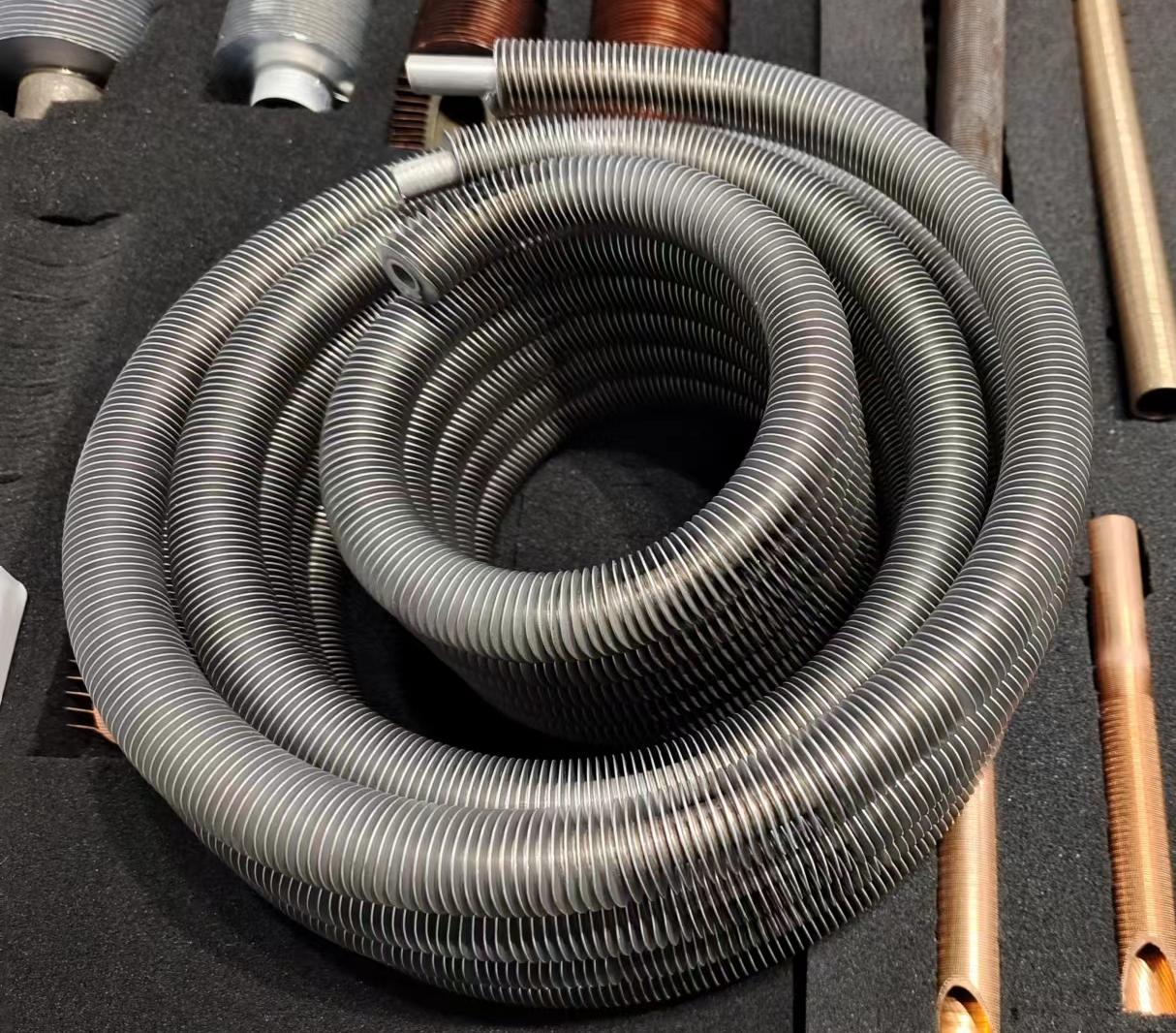Fin Coils: Optimizing Heat Exchange for Energy Efficiency and Durability
Fin coils are revolutionizing heat transfer systems across industries, offering unparalleled efficiency in HVAC, refrigeration, and automotive applications. This guide combines technical depth with actionable insights, supported by comparative data and industry-proven case studies.
1. Why Fin Coils Dominate Modern Thermal Management
By extending surface areas through finned structures, these coils achieve 30–50% higher heat transfer rates compared to traditional smooth-tube designs. Their adaptability spans from residential AC units to nuclear power plant cooling systems.
2. Engineering Excellence: Fin Coil Design Breakdown
2.1 Core Components & Material Science
| Component | Standard Materials | Thermal Conductivity (W/m·K) | Corrosion Resistance | Cost Index (1–10) |
|---|---|---|---|---|
| Tubes | Copper | 401 | Moderate | 8 |
| Aluminum | 237 | High | 5 | |
| Fins | Aluminum | 237 | High | 4 |
| Stainless Steel | 16 | Extreme | 9 |
Innovation Spotlight: Microchannel aluminum fins now achieve 12% better airflow with 20% less material in automotive radiators.
2.2 Critical Design Parameters
| Parameter | Optimal Range | Impact on Performance |
|---|---|---|
| Fin Density | 8–14 fins/inch | Higher density = +25% heat transfer but +15% pressure drop |
| Tube Diameter | 3/8"–5/8" | Larger diameters reduce clogging risk in industrial systems |
| Air Velocity | 2–5 m/s | Exceeding 5 m/s causes turbulence noise in HVAC units |
| Fin Thickness | 0.1–0.3 mm | Thicker fins extend lifespan in corrosive environments |
Pro Tip: Helical fin designs improve turbulence by 18% compared to flat fins in refrigeration systems.
3. Industry Applications: Data-Driven Success Stories
3.1 HVAC System Retrofit: Office Tower Case Study
Challenge: 35-story building with 30% energy overspend on cooling.
Solution:
-
Installed copper-tube/aluminum-fin coils with hydrophilic coating
-
Upgraded to variable-speed fans with IoT temperature zoning
Results (12-Month Analysis):
| Metric | Pre-Retrofit | Post-Retrofit | Improvement |
|---|---|---|---|
| Energy Cost | $18,500/mo | $12,900/mo | -30.3% |
| Maintenance Downtime | 40 hrs/yr | 8 hrs/yr | -80% |
| Tenant Comfort Complaints | 22/mo | 3/mo | -86% |
3.2 Food Cold Chain Optimization
A frozen logistics company reduced spoilage rates using fin coils with these specifications:
| Feature | Old System | New Fin Coil System |
|---|---|---|
| Defrost Cycles | 6/day | 2/day |
| Temperature Stability | ±3°C | ±0.5°C |
| Energy per Tonne-Km | 0.89 kWh | 0.62 kWh (-30.3%) |
| CO₂ Emissions | 12.3 kg/hr | 8.6 kg/hr (-30.1%) |
Key Innovation: Phase-change material (PCM) integrated fins maintained stable temps during power fluctuations.
4. Performance Metrics: What Engineers Need to Measure
4.1 Lifetime Cost Analysis (10-Year Horizon)
| Cost Factor | Basic Coil | Premium Fin Coil |
|---|---|---|
| Initial Investment | $12,000 | $18,500 (+54%) |
| Energy Expenses | $84,000 | $57,200 (-32%) |
| Maintenance | $9,500 | $3,200 (-66%) |
| Total Cost | $105,500 | $78,900 (-25%) |
ROI Insight: Premium coils break even in 2.3 years for 24/7 industrial operations.
4.2 Environmental Compliance
Modern fin coils meet strict regulations:
| Standard | Requirement | Fin Coil Advantage |
|---|---|---|
| ASHRAE 90.1 | Minimum SEER 13 | Achieves SEER 16–18 |
| EPA SNAP Rules | Low-GWP Refrigerants | Compatible with R-454B |
| EU Ecodesign 2023 | Energy Class A++ | Exceeds by 22% |
5. Future Trends: The Next Frontier
-
3D-Printed Fins: GE’s additive manufacturing trials show 40% weight reduction with equal thermal capacity.
-
AI-Optimized Designs: Google DeepMind reduced data center cooling costs by 40% using ML-driven fin configurations.
-
Self-Healing Coatings: MIT’s nanocoatings repair fin corrosion autonomously, extending lifespan by 8–10 years.
Smart Investment for Sustainable Operations
Fin coils are no longer just components—they’re strategic assets. From the 18% energy savings in our office tower case to the $26,600 decade-long cost advantage, the data proves their transformative potential. As regulations tighten and energy prices soar, adopting advanced fin coil technology becomes imperative for competitive, eco-conscious operations.
Ready to Upgrade? Click to add our engineers Kevin to serve you.

